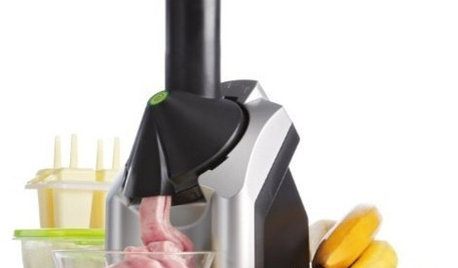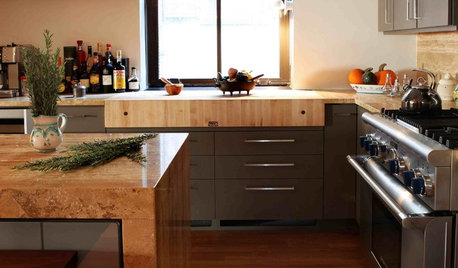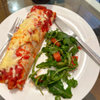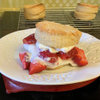Going out to eat while on Low Sodium diet...
shaun
13 years ago
Related Stories

PRODUCT PICKSGuest Picks: An Arsenal of Tools for Healthy Eating
Make cooking and juicing easier whether you follow a vegetarian, vegan, Paleo, primal or other diet
Full Story
LIFEGo Ahead, Eat in Front of the TV
But at least do it stylishly. A favorite guilty pleasure turns sophisticated with seats, tables and screens designed for a mealtime show
Full Story
REMODELING GUIDESHow to Remodel Your Relationship While Remodeling Your Home
A new Houzz survey shows how couples cope with stress and make tough choices during building and decorating projects
Full Story
KITCHEN COUNTERTOPSKitchen Counters: Granite, Still a Go-to Surface Choice
Every slab of this natural stone is one of a kind — but there are things to watch for while you're admiring its unique beauty
Full Story
HOUSEKEEPINGHow to Clean Your Fridge, Inside and Out
Keep your refrigerator clean and fresh, while you gain storage space and lose those ‘UFOs’
Full Story
SAVING WATERGreat Plants for Lush, Low-Water Gardens
Water restrictions making your garden look washed out? Give it living color with unthirsty grasses, flowers and succulents
Full Story
HEALTHY HOME12 Ways to Set Up Your Kitchen for Healthy Eating
Making smart food choices is easier when your kitchen is part of your support team
Full Story
REMODELING GUIDES10 Ways to Go Greener Through Design
See How Functional (and Beautiful) Eco-Friendly Practices Can Be
Full Story
LIFESimple Pleasures: Get a Book Club Going
Kick back with friends and a thought-provoking read for an event that’s entertaining and educational all at once
Full Story






elisamcs
mudlady_gw
Related Discussions
What I eat when I eat out (when dieting)
Q
need help w/ low sodium snacks, recipes, etc
Q
Made Low Sodium Chili! Results.....
Q
Low Fat, Low Sodium Apple Pie ( pic )
Q
shaunOriginal Author
ritaotay
shaunOriginal Author
foodonastump
shaunOriginal Author
ritaotay
foodonastump
punamytsike
shaunOriginal Author
punamytsike
jessyf
triciae
shaunOriginal Author
Bumblebeez SC Zone 7
lindac
beachlily z9a
Bumblebeez SC Zone 7
triciae
John Liu
foodonastump
triciae
foodonastump
Chi
lindac
shaunOriginal Author
Teresa_MN
John Liu
dcarch7 d c f l a s h 7 @ y a h o o . c o m
beachlily z9a
Teresa_MN
foodonastump
Teresa_MN
beachlily z9a
Teresa_MN
loves2cook4six
pkramer60
John Liu
lindac
JXBrown (Sunset 24, N San Diego County)
liriodendron
liriodendron
ritaotay
shambo
shaunOriginal Author
Bumblebeez SC Zone 7
sushipup1
shambo
shaunOriginal Author